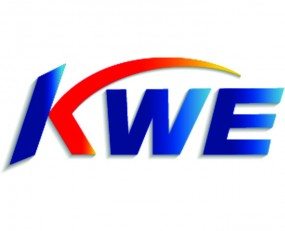
Life isn’t easy for Japan’s Kintetsu World Express (KWE), first-quarter results revealed last week.
Sales for the three months ending 30 June rose inorganically by 37.9% year-on-year, hitting JPY114bn in the first quarter, but operating income fell 25.3% to JPY1.9bn from JPY2.5bn one year earlier.
Barring the contribution of APL Logistics (APLL), which was acquired last year for US$1.2bn from Singapore’s Neptune Orient Lines, revenues dropped by about 12% at group level to just over JPY70bn, with most divisions withstanding difficult market conditions but faring poorly on a reported basis due to weak market conditions and currency headwinds.
The rise in cost of goods sold was about 300 basis points lower than the surge in sales, yielding a rising gross profit margin. However, as certain core operating costs doubled, operating income and profitability dropped materially from previous levels – quarterly operating margin was 1.7% against 3% the year before.
Cash flows statements were undisclosed, but net working capital fell significantly, both on an absolute basis and as a percentage of sales, which testifies to a better management of short-term liquidity and ought to have contributed to stable cash flows from operations.
Uncertainty in the financial markets and the downturn in China and Brazil characterised the first three months of fiscal year 2017, KWE pointed out, while domestic trades were affected by a strengthening currency and a stagnant economy.
In Japan, turnover was down 8.2% to JPY25.9bn, while domestic operating profits dropped 51.8% to JPY452m (23.6% of the group’s total). Although air freight exports rose 3.3% (based on weight), due to “shipments of semiconductor manufacturing equipment despite sluggish shipment of automotive-related products”, air freight imports dropped 4.2% based on the total number of shipments.
However, sea freight saw a rise both in imports and exports, with shipments growing 1.7% and volumes soaring 7%, respectively. As far as its domestic logistics operations were concerned, medical products were behind rising volumes.
In the Americas, year-on-year comparisons were not applicable given the US West Coast port congestion last year, but freight activity was broadly down while logistics operations turned out to be weak “due to the decline in shipments for major customers in the US and Canada”. Sales in the Americas fell 21.7% to JPY10.4bn, with operating income at JPY522m. Currencies played a part in the fall.
In EMEA, meanwhile, volumes for freight imports and exports were broadly subdued, with sales down 19.1% to JPY7bn and operating income at JPY119m. In East Asia and Oceania things were little different as KWE turned over JPY18.4bn, down 18.8% year-on-year, although it was barely in the black at operating profit level thanks to a lower cost base.
Finally, revenues in South East Asia stood at JPY10.4bn, down 14.8% year-on-year, but operating income rose 30.9% to JPY496m on better cost management.
APLL generated JPY43.8bn of sales and an operating loss of JPY1.1bn.
With JPY100bn of net debt at group level, KWE’s implied net leverage stands at over 4 times.
Source: Transport Intelligence, August 16, 2016
Author: Alessandro Pasetti